That is, stuff other than T. Rex, Smilodon fatalis (other sabertoothed cats are fine), dromaeosaurs, etc... Any time period is fine...and don't worry about being lazy on italics. Quotes taken from Wikipedia unless otherwise stated.
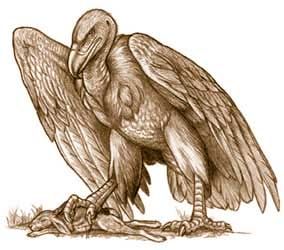
"Teratornis merriami (Miller, 1909). This is by far the best-known species. Over a hundred specimens have been found, mostly from La Brea Tar Pits. It stood about 75cm tall with estimated wingspan of perhaps 3.5 to 3.8 metres, and weighted about 15kg; making it slightly bigger than extant condors. It became extinct at the end of the Pleistocene, some 10, 000 years ago. Teratornis is Greek for 'monster bird'." Pictured here briefly on the ground.
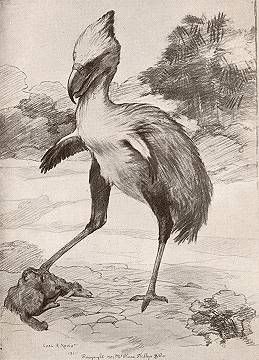
Phorusrhacos longissimus was roughly equivalent to Diatryma in size, but it was a simple case of parallel evolution. The two did not share a common ancestor. Phorusrhacos evolved much later-the earliest members of the genus date to the Miocene, about 27 million years ago. Phorusrhacos evolved to take advantage of the wide open South American pampas (steppe-like terrain). They quickly became the dominant predators in this biome.
When North and South America were linked again via the Central American land bridge, saber-toothed cats moved down into South America, displacing Phorusrhacos longissimus from the top of the food chain. However, the cats didn't drive it into extinction. Phorusrhacos stayed on as a lesser predator and scavenger. It is thought that a signifcant number of the birds gradually moved north, eventually diverging enough from their southern cousins to become the Titanis genus of terror birds found in Texas and Florida. Humanity finally killed off Phorusrhacos around 15,000-10,000 years ago.

"Argentavis magnificens (Campbell & Tonni, 1980). A partial skeleton of this enormous teratorn was found from La Pampa, Argentina. It is the oldest known teratorn, dating to late Miocene, about 6 to 8 million years ago, and one of the very few teratorn finds in South America. Initial discovery included portions of the skull, incomplete humerus and several other wing bones. Even conservative estimates put its wingspan between 6 and 7 metres, and it may have been as much as 8 metres. Weight of the bird was estimated to have been around 80kg. Estimated weight and wing area rival those of the largest Pterosaurs."

"Diatrymas consist of four extinct species of large flightless birds. Fossils aged 65 to 55 million years (Paleocene to Eocene) have been found in North America, France, and Germany.
The birds stood over two metres tall, and had unusually large skulls in proportion to their bodies (nearly 50 cm long, including a beak over 20 cm long.) They weighed about 100 kg. Diatrymas bear a superficial resemblance to phorusrhacids, but there is not a close relationship.
There has been debate about whether diatrymas were carnivores or herbivores, using their large beaks for cracking nuts, as parrots do. Lawrence Wittmer and Kenneth Rose (1991) concluded from an analysis of the biomechanics of the jaw that the birds were carnivorous, hunting and eating small mammals."
The taxonomy has recently shifted to Gastornis, but that doesn't sound nearly as cool.
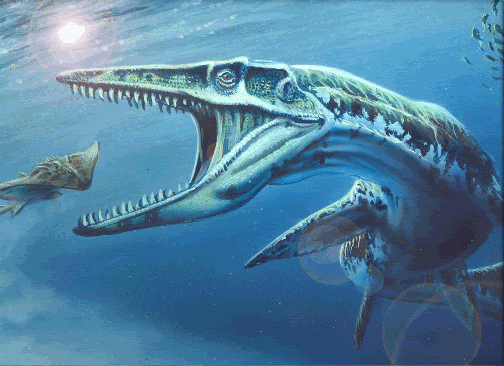
Tylosaurus, a Late Cretaceous mosasaur-related to both modern monitor lizards and snakes, if I'm not mistaken.
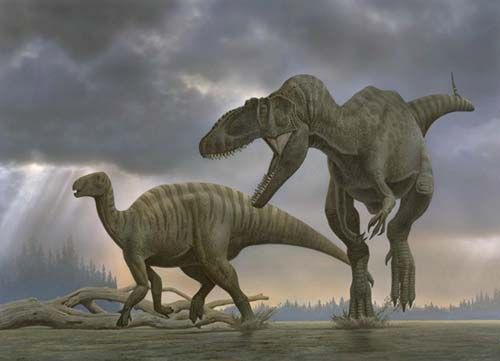
Carcharodontosaurus saharicus-slightly outclasses T. Rex in terms of length. Believed to be the same species as the South American Giganotosaurus.
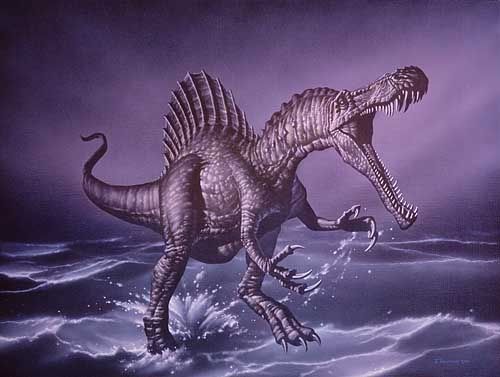
Spinosaurus aegypticus-Jurassic Park 3 may have put it in the spotlight, but since the best Spinosaurus skeleton ever found was destroyed in the WWII bombing of Munich, most of our knowledge consists of educated guesses and limited data gathered before the bones were destroyed. In case you didn't know, the sail regulates body heat.
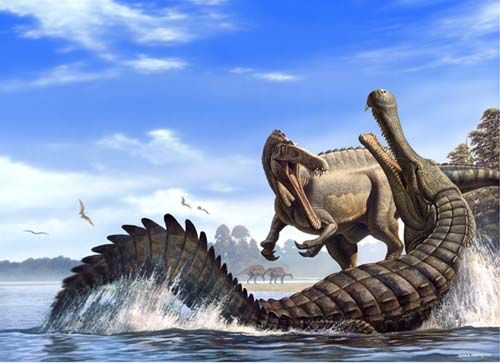
Sarcosuchus-50 feet of gigantic, gharial-esque crocodile versus Suchomimus, an Early Cretaceous spinosaurid.
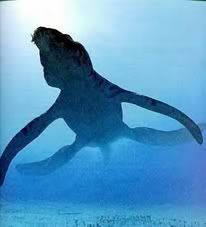
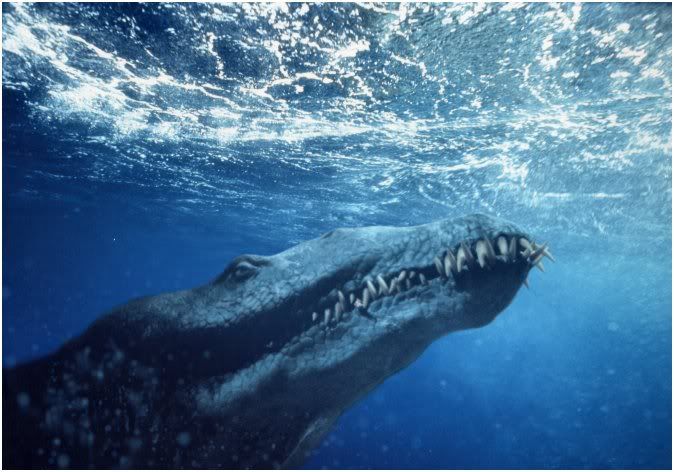
Liopleurodon, a Jurassic pliosaur that compares quite favorably in size with many whales.
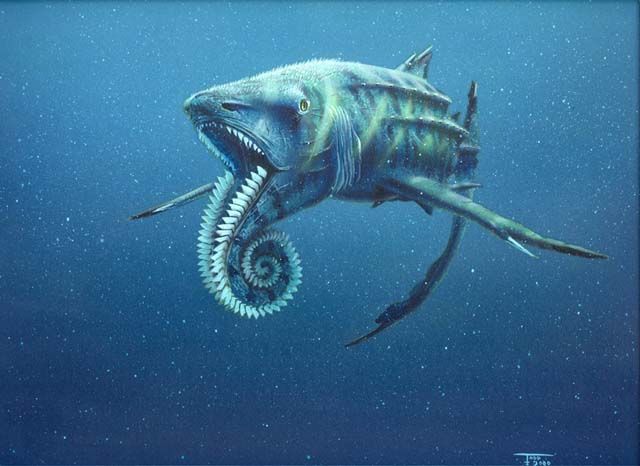
Helicoprion, a form of bizarre primitive shark. The only major thing scientists have found is that strange jaw with its spiraling teeth.